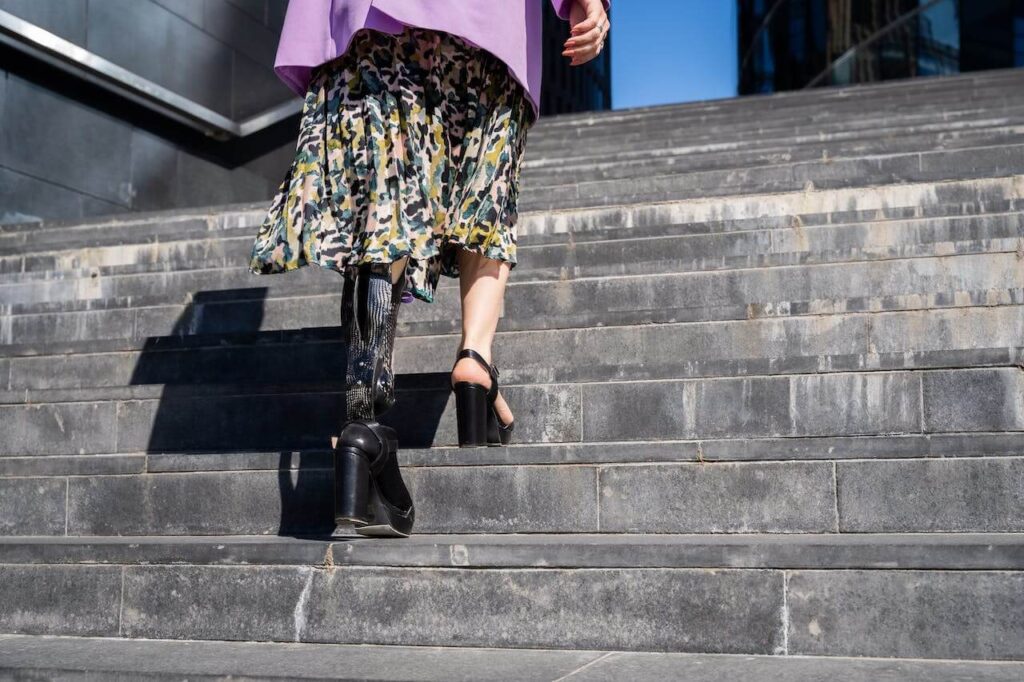The human body, in all its diversity, is a canvas that reflects our unique journeys and experiences. For individuals who have undergone limb loss, the path to embracing a positive self-image can be intricate and emotionally charged. This article explores the challenges posed by body image after limb loss and, more importantly, how individuals navigate this journey with resilience, self-love, and a redefined sense of identity.
The Impact of Limb Loss on Body Image
Losing a limb is a profound and life-altering experience that extends beyond the physical adjustments to the body. It touches the core of one’s identity, self-esteem, and overall perception of self. The societal emphasis on physical appearance can exacerbate these challenges, leading individuals to grapple with feelings of self-consciousness, inadequacy, and, at times, shame.
Meet Emma: A Personal Encounter with Body Image Struggles

Emma, a vibrant individual who lost her leg in a car accident, opens up about her journey of grappling with body image challenges. “In the beginning, it was tough,” she admits. “I constantly compared myself to societal standards of beauty, feeling like I fell short. Accepting the changes to my body was a process—a journey of self-discovery that required patience and self-compassion.”
The Role of Media and Society
Media portrayal and societal expectations play a significant role in shaping perceptions of beauty and normalcy. Images of flawless bodies flood our screens, perpetuating an unrealistic standard that can be especially challenging for those who deviate from the conventional physical norm. For amputees, this can intensify feelings of otherness and contribute to a distorted self-image.
Challenging Beauty Norms: A Call for Diversity
As society becomes more aware of the need for inclusivity, there is a growing movement to challenge traditional beauty norms. Advocates emphasize the beauty in diversity, striving to redefine societal perceptions of what is considered normal or attractive. This shift encourages amputees to embrace their uniqueness and challenges the narrative that a complete body is the only definition of beauty.
Building a Positive Self-Image: A Journey of Self-Discovery
The path to overcoming body image challenges after limb loss is deeply personal and often involves a journey of self-discovery. Here are key aspects of this transformative process:
- Self-Compassion: Developing self-compassion is crucial in the journey toward a positive self-image. Recognizing and acknowledging the challenges while treating oneself with kindness is a foundational step. Amputees learn to be patient with their bodies, understanding that healing goes beyond physical recovery.
- Connecting with Others: Sharing experiences with fellow amputees fosters a sense of belonging. Emma notes, “Connecting with others who had similar experiences helped me realize that my journey was valid. We shared our stories, laughed, and cried together. It was a powerful reminder that I wasn’t alone in this.”
- Therapeutic Support: Professional support, whether through counseling, therapy, or support groups, can provide essential tools for navigating body image challenges. Therapists specializing in body image and self-esteem help individuals explore their feelings, process emotions, and develop coping strategies.
- Empowerment Through Self-Expression: Engaging in activities that promote self-expression and creativity can be empowering. Whether through art, fashion, or personal style choices, amputees find ways to showcase their individuality and challenge preconceived notions about beauty.
- Focus on Abilities: Shifting the focus from what the body lacks to what it can achieve is a powerful mindset change. Celebrating the capabilities of the body, regardless of its form, helps individuals cultivate a positive and empowering self-image.
Meet James: A Story of Empowerment
James, a below-knee amputee and advocate for body positivity, shares his journey toward self-empowerment. “I started focusing on what my body could do rather than what it couldn’t. I became involved in adaptive sports, challenging myself in new ways. The sense of accomplishment translated into a newfound appreciation for my body.”
The Impact of Positive Representation
As the movement for inclusivity gains momentum, positive representation of amputees in media and popular culture becomes a catalyst for change. When individuals see diverse bodies celebrated and normalized, it contributes to a broader shift in societal perceptions and fosters a more inclusive definition of beauty.
Conclusion
The journey of overcoming body image challenges after limb loss is multifaceted, marked by moments of vulnerability, self-discovery, and empowerment. It is a testament to the resilience of the human spirit and the capacity to redefine one’s sense of self. As society continues to evolve towards greater acceptance and celebration of diversity, the narratives of individuals navigating these challenges contribute to a broader conversation about beauty, identity, and the inherent value of every unique human experience. Ultimately, the journey toward a positive self-image after limb loss is a voyage of self-love, self-acceptance, and the celebration of the remarkable resilience that defines the human experience.



